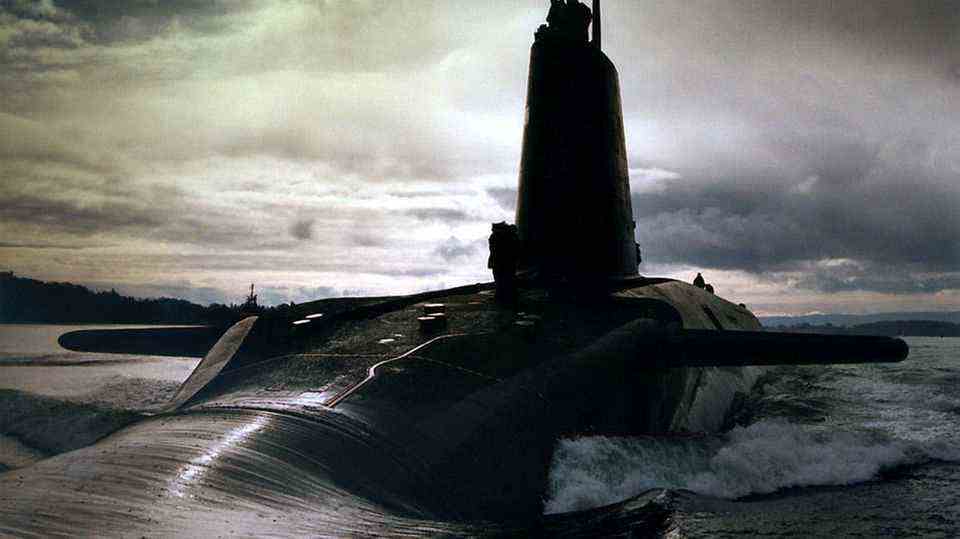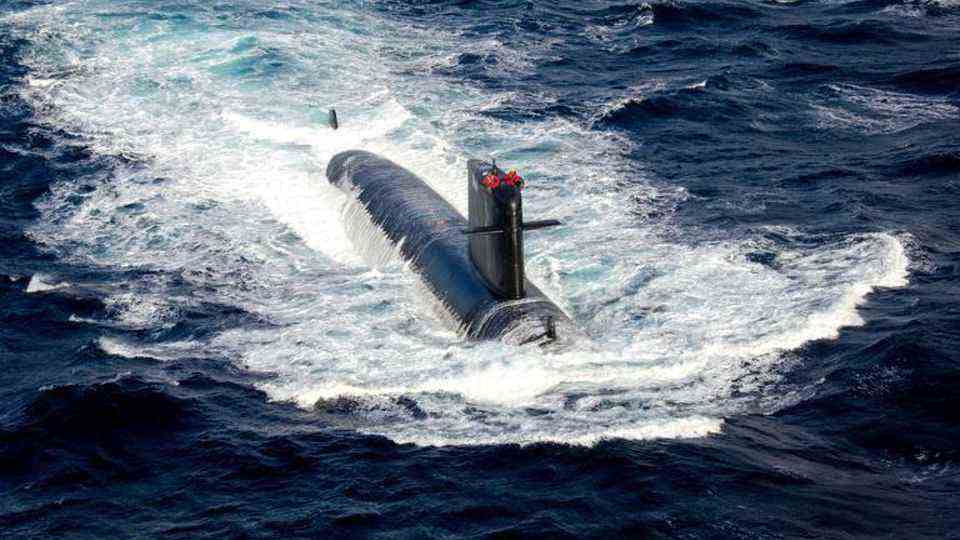Incident in Scotland
“Shit! What the Hell!” – the shock when a British warship was rammed by Putin’s submarine
At the moment of the collision, the transmitter team was on the bridge,
© Channel 5 / PR
The Cold War is coming back to life. In 2020 a British frigate and a Russian submarine were watching each other when suddenly the sonar of HMS “Northumberland” was hit. A TV documentary now shows the incident up close.
A submarine pushes silently through the sea, a few meters above the boat a destroyer plows through the waves. Hollywood films love scenes like this, and they actually happen. On the British TV station Channel 5, the documentary “Life at Sea” shows a sailor on the bridge of the frigate HMS “Northumberland” shouting: “Shit! What the hell? What was that?” At that moment, a Russian attack submarine scratches the ship’s “ear tube”, the sonar.
Potential battlefield
Since the annexation of Crimea and the tensions in eastern Ukraine, the peaceful coexistence of the great powers in the North Atlantic is over. Today they are “playing” submarine warfare again, as shown in the Hollywood film “The Hunt for Red October”. The basic rules of the game are always the same: The North Atlantic is a vital area for NATO, in the event of a conflict this supply line between the USA and Western Europe must be kept free at all costs. The surface ships of the USSR then and now Russia are no match for the US Navy and its allies. But the submarines can outsmart them and become dangerous hunters. That is why the presence of the boats is already a threat from the point of view of the West.
In late 2020, a Russian submarine was maneuvering north of Scotland when HMS “Northumberland” was dispatched to track it down. The exercise: To prevent the Russians from tapping or cutting submarine cables. The Royal Navy’s Type 23 frigate reached the zone and deployed array sonar there. The sonar is dragged behind the ship on a cable to listen for the noises the submarine makes during its journey. The exposure makes it easier to filter out the ship’s own noises. A trick from the Second World War.
Got too close
The Navy called the incident a “million to one coincidence” when the submarine collided with the sonar cable. The operation of the HMS “Northumberland” had to be canceled. The sonar was badly damaged by the collision. Of course, the Russian submarine also knew the British were nearby. Putin’s men also practice. Their goal was not to escape, but to get as close as possible to the frigate without it being able to locate them. The surprise on the bridge of the “Northumberland” shows that although the British had sonar contact with the Russian boat, they could not locate the exact position of the boat. The British Navy assumes that the collision must have been an accident. An anonymous source in the Navy told the “Sun”: “The sonar device was badly bruised and unusable. The crew of the submarine probably pissed their pants.” The source assumes that the submarine was likely also damaged by the impact.
The advantage of depth
During the Cold War, Moscow loved to open a group of submarines and then make them disappear, demonstrating its helplessness to the West. In the Second World War, the Allies were able to win the North Atlantic battles against Hitler’s wolf pack, but that does not mean that the submarine threat has been averted. In exercises, the small boats repeatedly manage to break through the defensive shield of frigates and destroyers of a carrier group and to sink the aircraft carrier and its escort ships, virtually of course. In an emergency, Putin’s submarines would also look for this opportunity.
Source. Channel 5
Also read:
How a 30 year old submarine sank a US carrier group
Supercavitation – when submarines dive faster than fighter jets can fly
Bumblebee: Japanese submarine wants to appear under freighter




